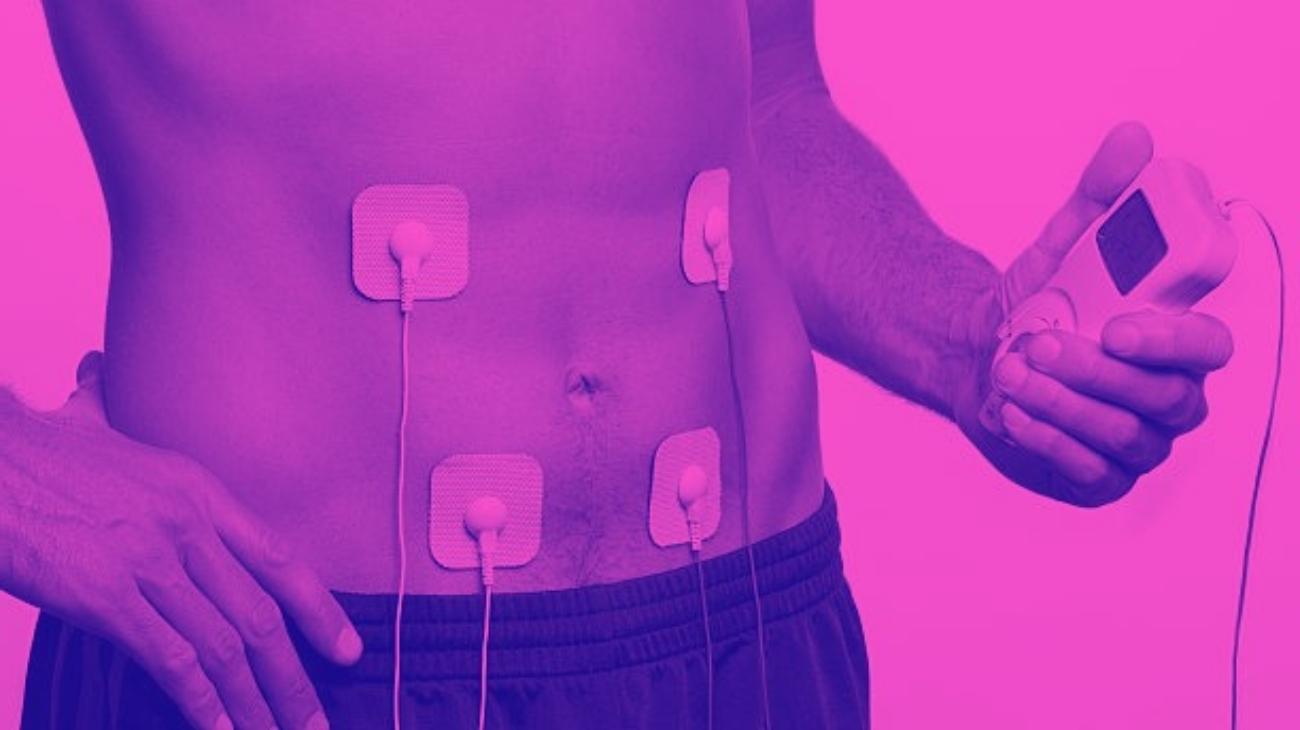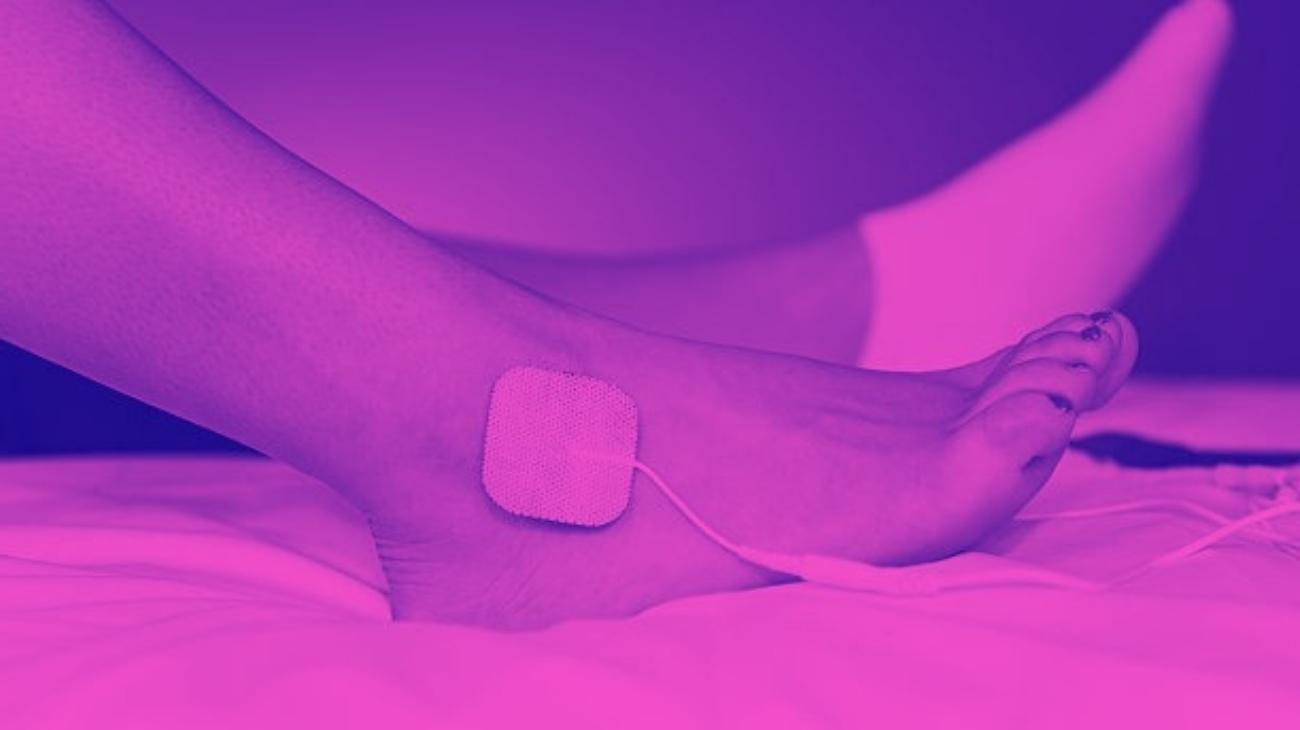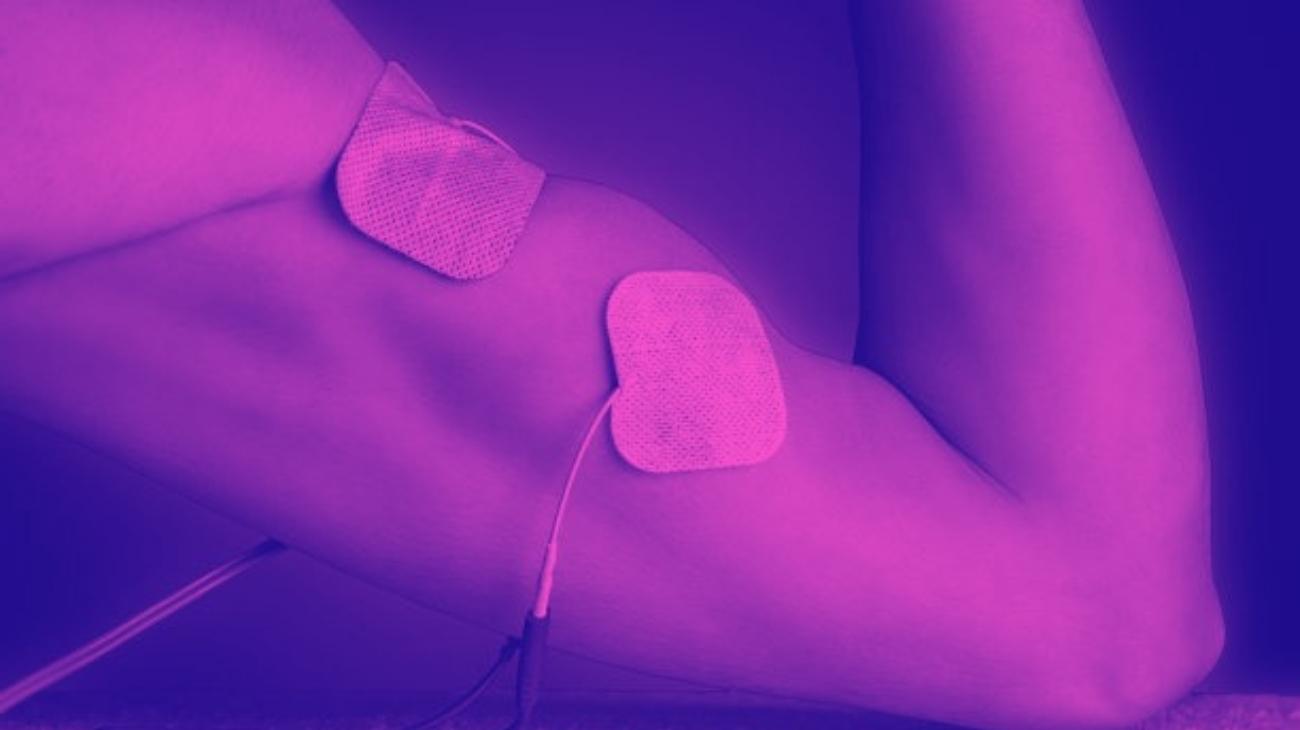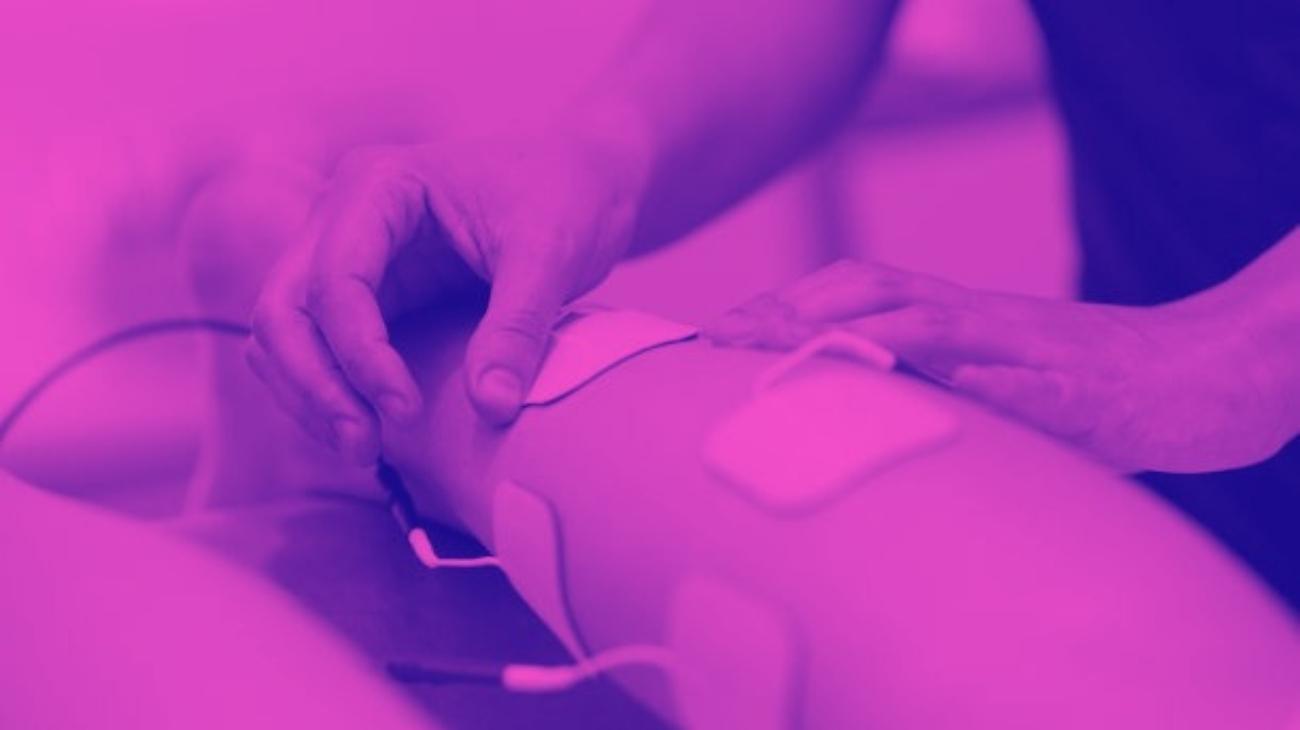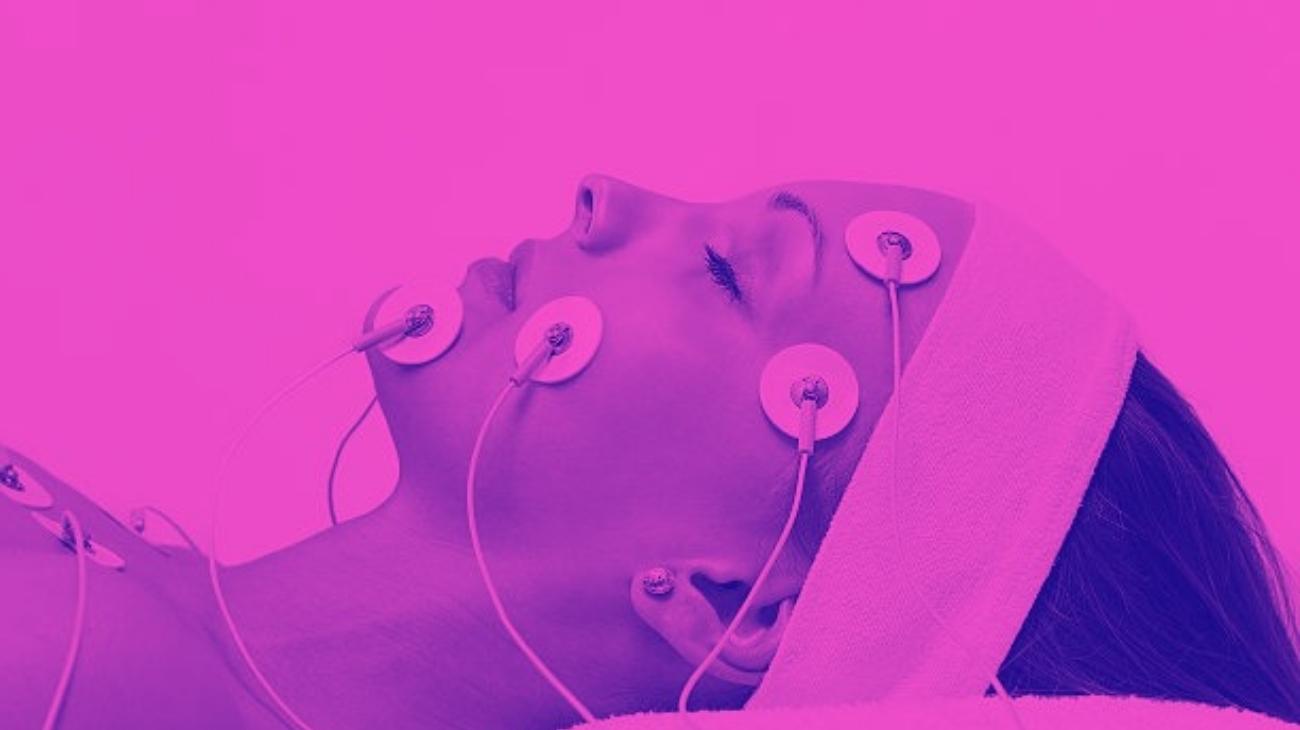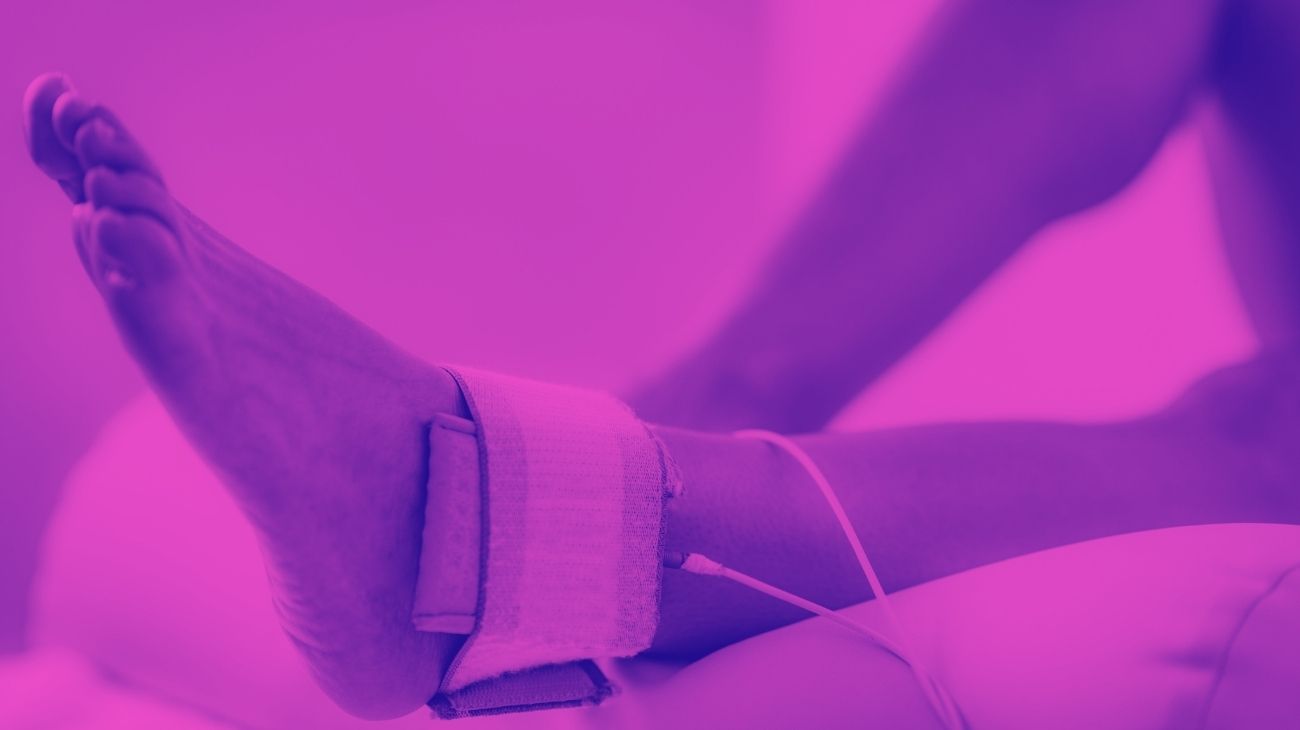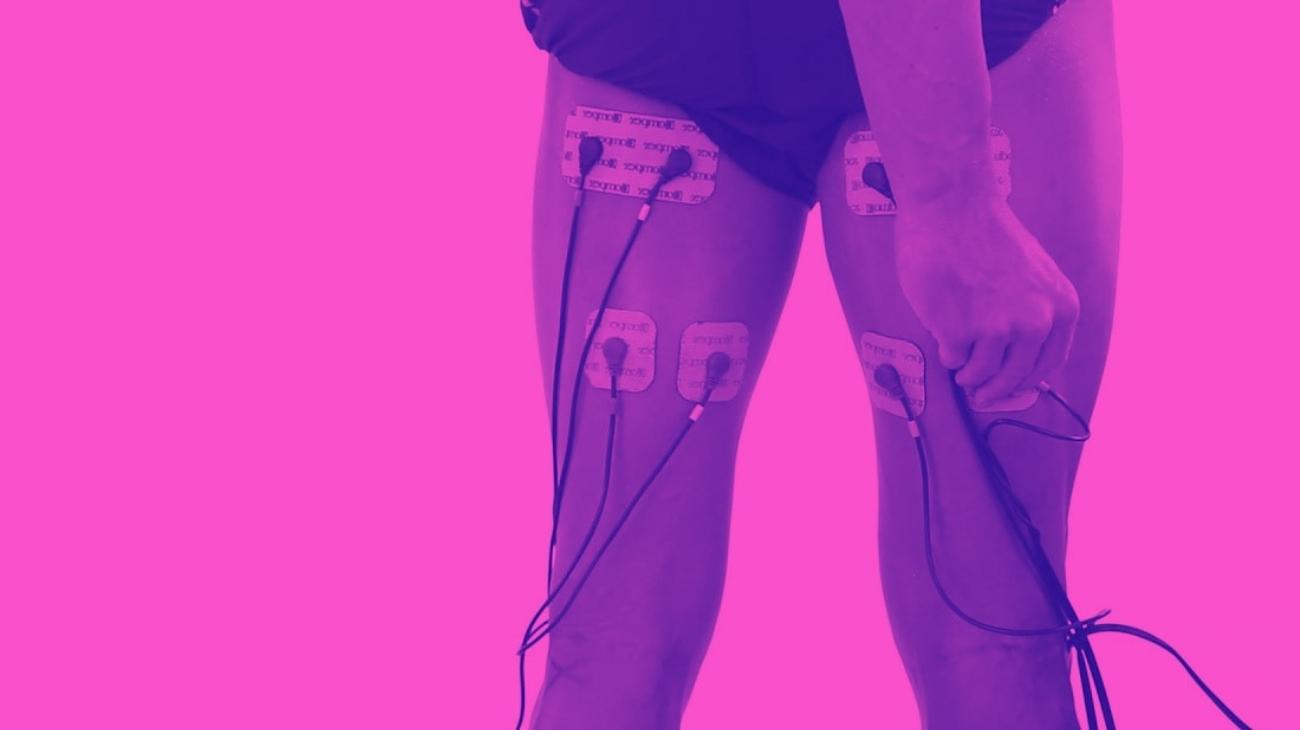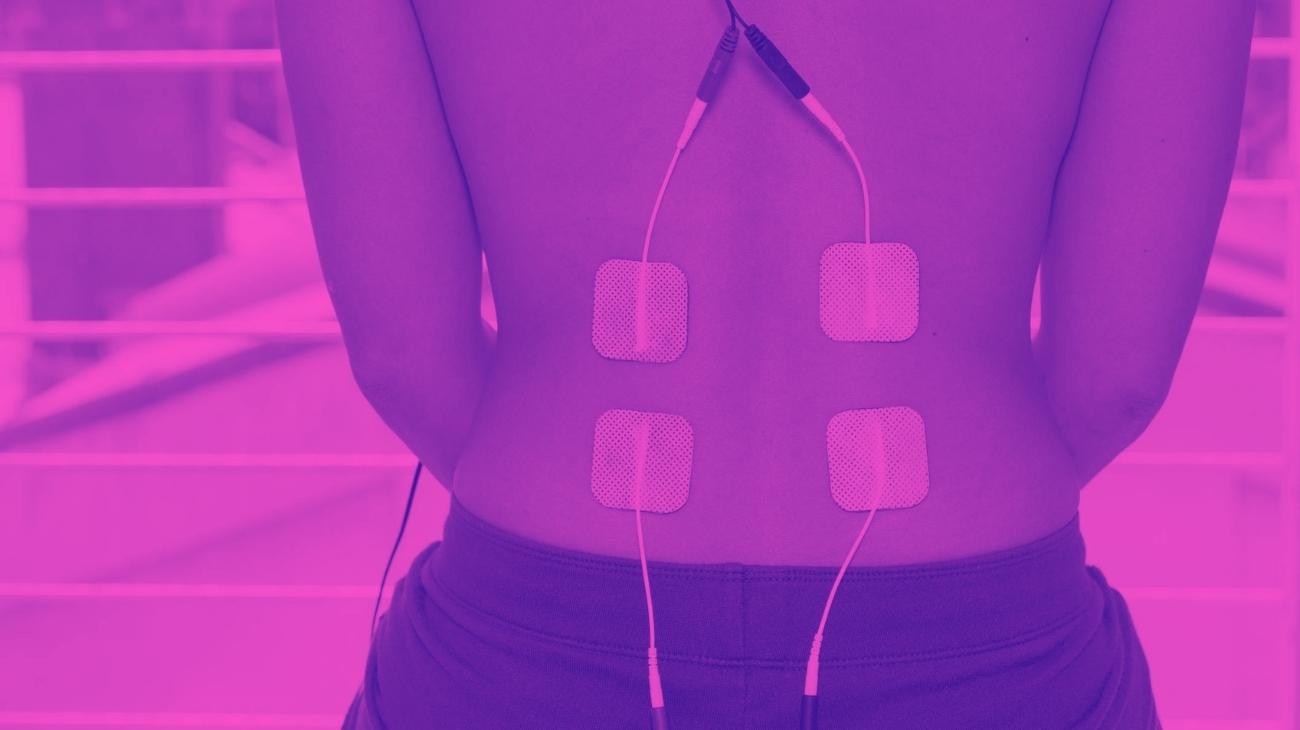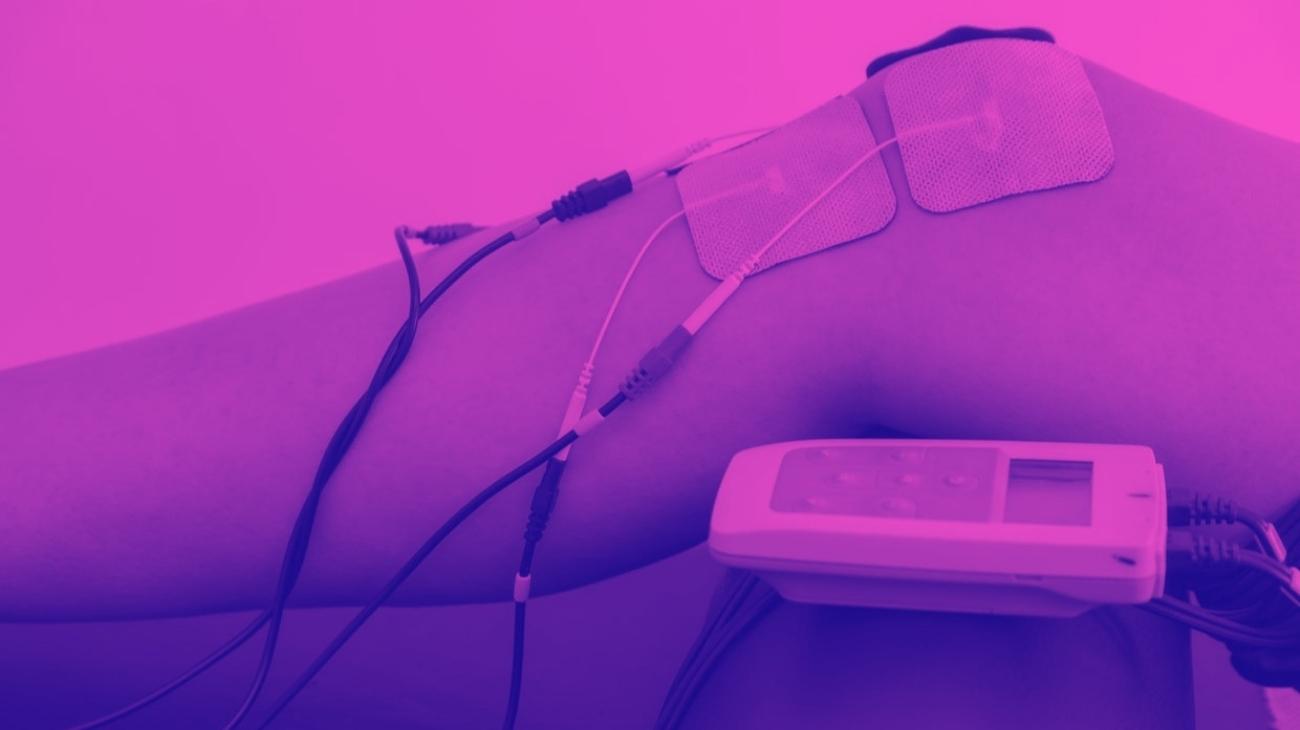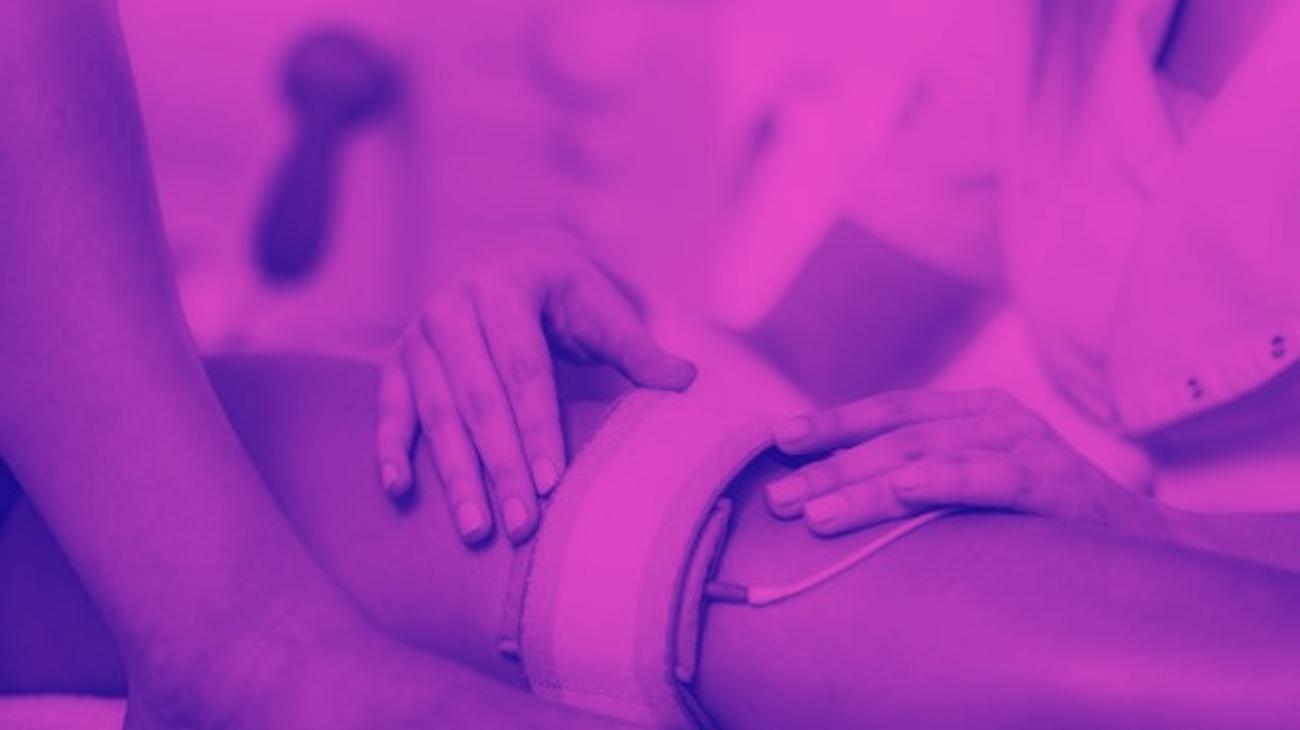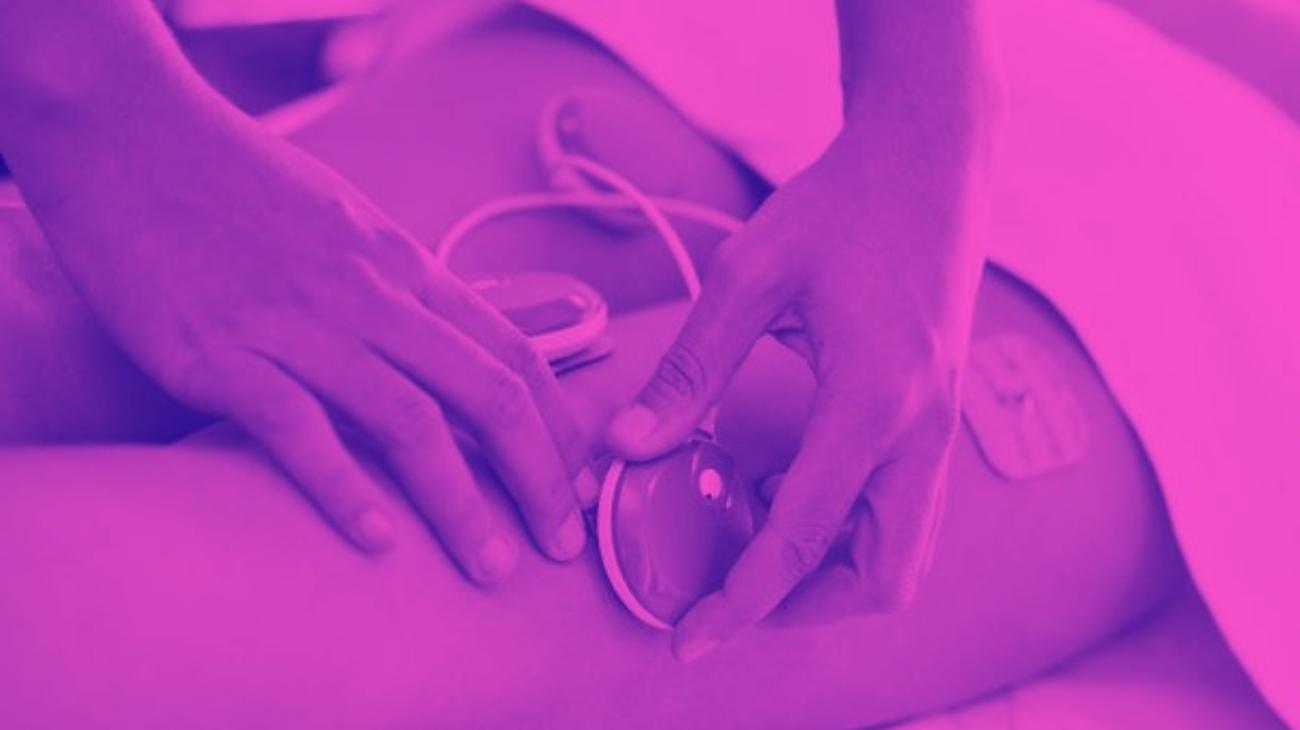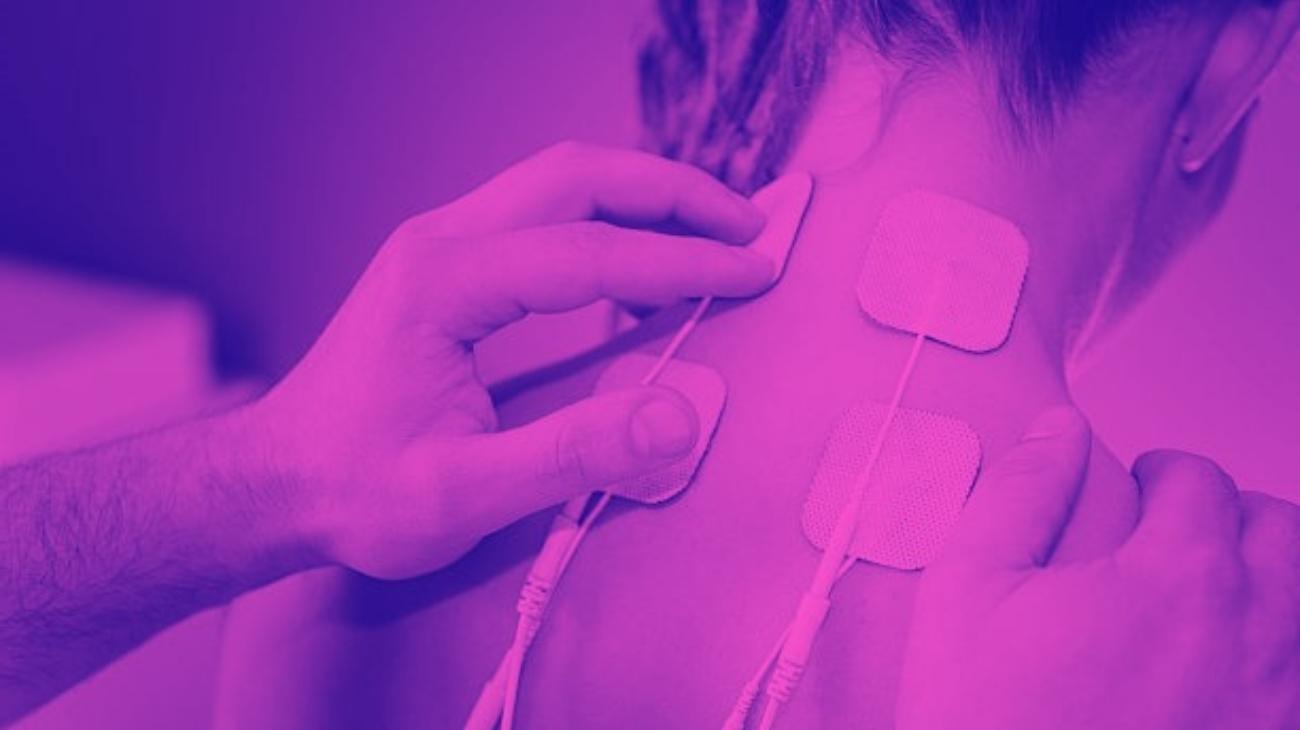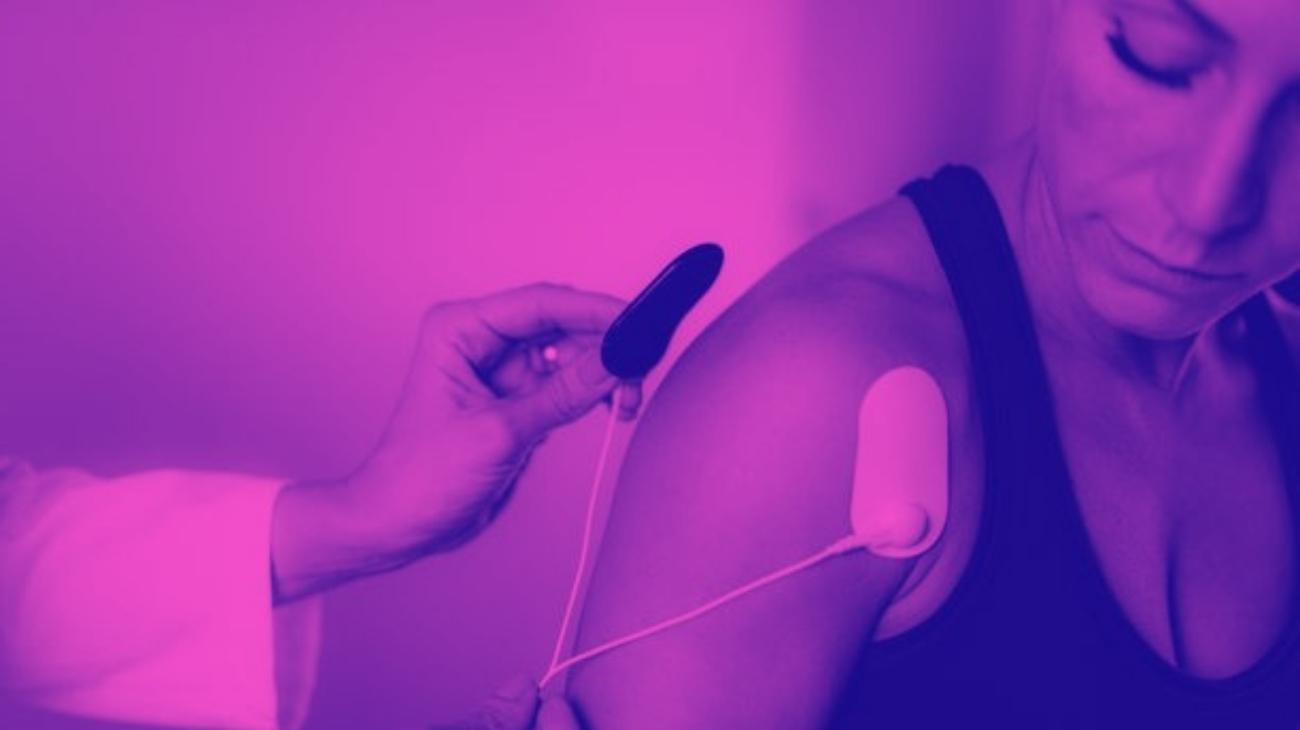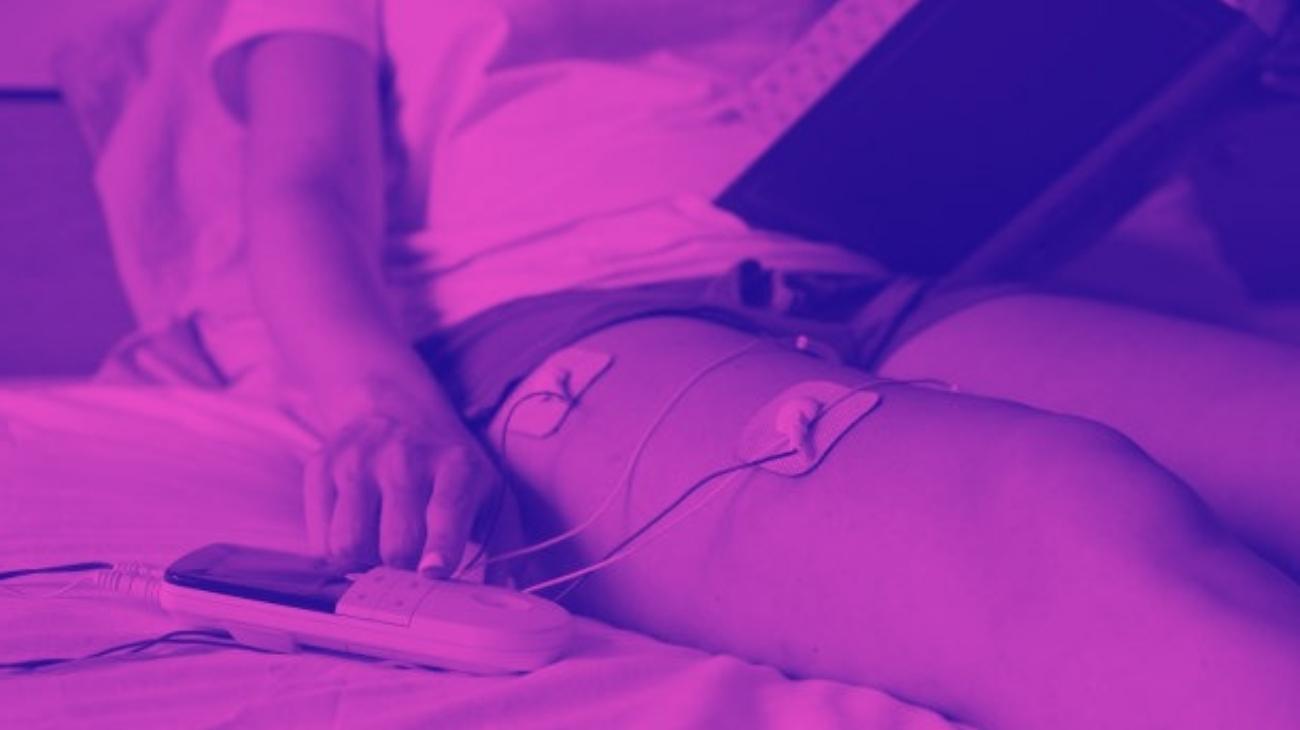- How to use a TENS machine to relieve leg pain?
- Best TENS machines for the recovery of leg injuries
- How to use an EMS muscle electro stimulator for the legs?
- Best EMS electrostimulators to strengthen leg muscles
- Video: How to place electrodes pads on the legs?
- More types of EMS stimulators and TENS machines you should know about
- Most common types of leg injuries
- Differences between TENS and EMS: Which one to use for leg pain?
- Contraindications to the use of electrodes and electrotherapy
The legs can be considered among the most important extremities of the body, thanks to their function of supporting its weight and mobilize us either in a sporting environment or in the performance of daily tasks. This is why injuries to the lower limbs are very common, and can cause ailments of different levels that affect to a greater or lesser extent your daily performance.
Fortunately, TENS and EMS electrostimulation therapies are quite reliable ways to treat leg pain and promote leg recovery, so we will show you how to apply these therapies to achieve optimal recovery.
How to use a TENS machine to relieve leg pain?
The legs are made up of several muscle groups, among which the quadriceps, hamstrings and gluteus at the top, and the gastrocnemius and soleus at the bottom. This amount of muscle tissue makes them the strongest limbs in the body, but consequently makes injuries particularly disabling and painful.
For cases such as these, transcutaneous electrical nerve stimulation therapy brings a host of benefits, among which we can highlight:
- Pain reduction: the electrical impulses produce numbness in the nerve endings of the nociceptors located in the various nerves that innervate the legs, almost immediately annulling the sensation of pain and providing long-lasting relief.
- Relaxation of the fibrous tissue: the electrical pulses cause the relaxation of the ligaments along the leg, the ischiofemoral ligament, the pubofemoral ligament, the rectofemoral tendon, the semitendinosus tendon and the internal rectus tendon, mitigating the sensation of odor in the affected area.
- It favors the production of endorphins: the electrical discharges circulate through the skin and superficial nerves, favoring the release of endorphins and other substances that work as natural analgesics in the body.
- Suppression of pain receptors: the electric shocks suppress the nerve endings located in the branches of the femoral, peroneal, tibial and sural nerves, which are mainly responsible for innervation along the leg, reducing their effect and providing relief to the patient.
The use of TENS electrotherapy offers great benefits to patients with leg complaints. However, it is necessary to emphasize that this therapy is not a method to cure injuries or diseases, but focuses on reducing the sensation of pain so that the healing process is more bearable for the patient.
It is a technique widely applied in physical therapy as a complement to improve the patient's experience, and both TENS sessions and injury recovery therapy should be performed under the supervision of a specialist.
Best TENS machines for the recovery of leg injuries
Thanks to the effectiveness of TENS unit treatment, it is possible to access a wide variety of electrostimulators with different configurations and number of electrodes, thus providing a wide range of action to treat different ailments in various parts of the body. However, to treat pains here occurring along the legs, the best TENS units are the following:
- Type: Combo
- Channels: 4
- Modes/Programs: 24 Programs
- Intensity: Not specified
- Wireless: Yes
- Heat Therapy: No
- Battery: Rechargeable Lithium
- Electrodes: 24 Pads
- Display: Digital
- Size: Not specified
- Includes user manual
- TENS+EMS combo
- Includes carrying bag
- Reduces pain symptoms
- Rechargeable battery
- Battery life not specified
- No intensity levels specified
- No heat therapy
It has 4 channels of operation, 5 modes of TENS currents, 3 modes of EMS stimulation; and 24 predefined programs that generate low intensity electrical impulses to stimulate the nerve endings in the treated area, effectively blocking pain signals.
- Type: Combo
- Channels: Dual
- Modes/Programs: 24 Modes
- Intensity: Not specified
- Wireless: Yes
- Heat Therapy: No
- Battery: Rechargeable Lithium (up to 20 hours)
- Electrodes: 8 Pads
- Display: Touch
- Size: Not specified
- Includes user manual
- Long battery life (up to 20 hours)
- Portable and small size
- TENS+EMS Combo
- Reduces pain symptoms
- Does not specify intensity levels
- Does not specify measurements and weight
- Does not include carrying bag
It includes 24 massage programs in total, which are designed to treat a wide variety of ailments. Each of the modes has 4 different options to choose from, and comes with all the accessories you may need, from electrodes and guide wires to a user guide and an electrode positioning guide.
- Type: TENS
- Channels: Dual
- Modes/Programs: 5 Modes
- Intensity: 10 Levels
- Wireless: Yes
- Heat Therapy: No
- Battery: Rechargeable Battery
- Electrodes: 4 Pads
- Display: Digital
- Size: 8.8" x 2" x 7.8" - 1.15 lbs
- Includes user manual
- Prevents muscle atrophy
- Accelerates recovery from sports injuries
- Includes carrying bag
- Reduces pain symptoms
- Non-universal electrode replacements
- Not suitable for muscle hypertrophy
- Few types of programs
The TENS 7000 muscle stimulator includes one of the most complete electrical stimulation therapy packages you will find. It includes 1 TENS 7000 unit, 2 guide cables, 4 packs of reusable pads, 1 9-volt battery, 1 instruction manual and a hard case to carry your electrostimulation equipment wherever you want.
- Type: TENS
- Channels: 4
- Modes: 24 Programs
- Intensity: Not specified
- Wireless: No
- Heat therapy: No
- Battery: Rechargeable
- Electrodes: 8 Pads
- Display: LCD
- Size: Not specified
- 4 independent channels
- Provides cramp relief
- Portable Device
- Promotes tissue healing
- 24 programs
- Few electrodes
- Does not specify battery life
- Does not specify intensity and size
It has 24 clinically proven massage programs, which are divided into 12 TENS therapy programs and 12 muscle stimulation training modes. It has a long-life rechargeable lithium battery that will give you a great autonomy of several hours of continuous use, eliminating the extra cost of buying replacement cylindrical batteries.
- Type: TENS
- Channels: Dual
- Modes/Programs: 8 Modes
- Intensity: 25 Levels
- Wireless: Yes
- Heat Therapy: No
- Battery: 3 AAA Batteries
- Electrodes: 4 Pads
- Display: Digital
- Size: 2.14" x 5.5" x 7.08" - 0.33 lbs
- Includes carrying bag
- Improves joint mobility
- Portable and small size
- Reduces pain symptoms
- Good quality
- Few types of programs
- Not suitable for muscle hypertrophy
- Battery operated
It has an interesting session timer function that allows you to adjust the duration of each therapy up to a maximum of 60 minutes. Its compact size allows it to be carried in your pocket, so you can take it with you from home to work, or on the road, and use it whenever you need it.
How to use an EMS muscle electro stimulator for the legs?
The leg muscles are constantly at work due to the demands of carrying and mobilizing most of the body weight, so the use of muscle electrostimulation can greatly benefit your physical performance, regardless of whether you participate in high-demanding sports or not.
Among the main benefits that EMS therapy brings to the legs are the following:
- Toning of muscle mass: the muscle contractions provoked by the electrical impulses of the EMS device promote the growth of muscle mass and fat burning, thus promoting muscle toning and definition.
- Increased physical performance: the strength and elasticity that muscle groups such as the hamstrings and calves acquire through this therapy improve performance in medium to high performance physical activities.
- Prevention of future injuries: by strengthening the leg muscles, they are able to withstand a greater load and perform better under pressure, reducing the likelihood of muscle tears and other injuries.
- Increased speed of recovery: the stimulus caused by the electrical impulses stimulates the recovery of the fibers of the muscle or muscle group being treated, thus increasing the speed of recovery in rehabilitation treatment for muscle injuries.
Best EMS electrostimulators to strengthen leg muscles
The use of electrostimulators for physical training sessions and physiotherapy is widespread in the highly competitive sports environment, so it is possible to find a variety of devices of different configurations. Among the most commonly used EMS machines for leg training, we can mention the following:
- Type: Combo
- Channels: 4
- Modes/Programs: 6 Programs
- Intensity: Not specified
- Wireless: No
- Heat Therapy: No
- Battery: Rechargeable
- Electrodes: 12 electrodes
- Display: Digital
- Size: 5.38" x 3.75" x 1"
- Improves blood circulation
- Prevents muscle atrophy
- Rechargeable battery
- Good quality
- Reduces pain symptoms
- Does not specify intensity levels
- No heat therapy
- No weight specified
It also has 5 programs of use focused on different branches of physical conditioning: endurance, resistance, strength, active recovery and warm-up. Proper use of this device will allow you to reach your maximum performance with very little cardiovascular fatigue, and is highly recommended for fitness enthusiasts who frequently engage in competitions.
- Type: Combo
- Channels: -
- Modes/Programs: 15 Programs
- Intensity: Not specified
- Wireless: Yes
- Heat Therapy: No
- Battery: Rechargeable Lithium
- Electrodes: 4 Pads
- Display: No display
- Size: Not specified
- TENS+EMS Combo
- Control from mobile app
- Reduces pain symptoms
- Includes user manual
- Rechargeable battery
- Does not specify dimensions and weight
- Battery life not specified
- Does not specify intensity levels
With more than 400 modes of use and a variety of intensity levels, the PowerDot 2.0 is one of the most complete electro stimulators available, as its functions focus on muscle recovery, improved physical performance, and pain relief. All these features make it the leading choice for the immediate treatment of any pain, whether caused by injury or illness.
- Type: Combo
- Channels: 4
- Modes: 20 Programs
- Intensity: 40 Levels
- Wireless: No
- Heat therapy: No
- Battery: Rechargeable
- Electrodes: 12 Pads
- Display: Digital
- Size: Not specified
- Features 20 modes
- Includes 40 intensity levels
- Portable device
- 12 pads with different sizes
- Rechargeable battery
- Somewhat slow charging
- No size specified
It has 20 modes of use and 40 adjustable intensity levels, as well as a time controller that allows you to adjust the therapy sessions according to your needs. Its compact size makes it incredibly discreet, so you can take it to the office, on a trip, on the street or wherever you like.
- Type: Combo
- Channels: Dual
- Modes/Programs: 24 Modes
- Intensity: 20 Levels
- Wireless: Yes
- Heat Therapy: No
- Battery: Lithium Rechargeable (up to 24 hours)
- Electrodes: 8 Pads
- Display: Digital
- Size: Not specified
- TENS+EMS Combo
- Long battery life (up to 24 hours)
- Portable and small size
- Improves joint mobility
- Improves blood circulation
- Does not specify measurements and weight
- Does not include touch screen
- Some electrodes dry quickly
It has 20 intensity levels and a dual current output function, which will allow you to program different modes of use in each of its electrodes allowing you to treat different areas of the body simultaneously. Its electrodes are reusable and hypoallergenic, and it has a timer that can be adjusted between 10 and 60 minutes.
- Type: Combo
- Channels: Normally 2 (Dual)
- Modes/Programs: 6 Programs
- Intensity: Not specified
- Wireless: Yes
- Heat Therapy: No
- Battery: Rechargeable (7 hours of use)
- Electrodes: 2 Pods and 6 electrodes
- Display: Smartphone
- Size: Not specified
- Reduces pain symptoms
- Portable and small size
- TENS+EMS Combo
- Wireless electrodes
- Rechargeable battery
- Size and weight not specified
- No intensity levels specified
- No heat therapy
It has a rechargeable battery that can provide an autonomy of up to 7 hours per charge, 6 unique training programs focused on different branches of fitness to help you achieve your goals, and compatibility with your mobile for easy use. It is recommended for those physically active people looking for a compact, portable and natural way to deal with workout-related ailments.
Video: How to place electrodes pads on the legs?
Electrodes for quadriceps
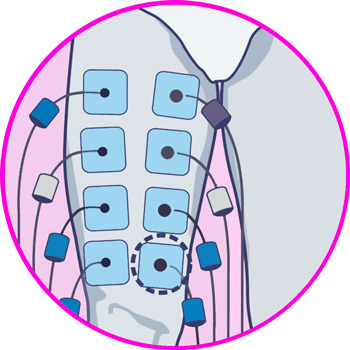
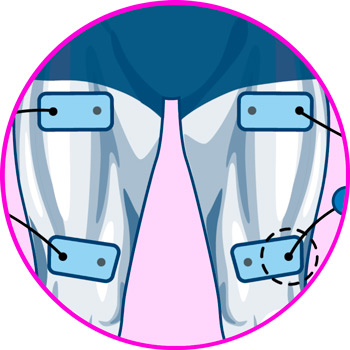

Electrodes for hamstring
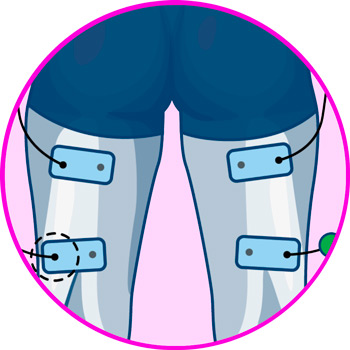
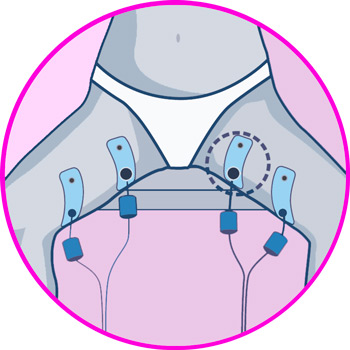
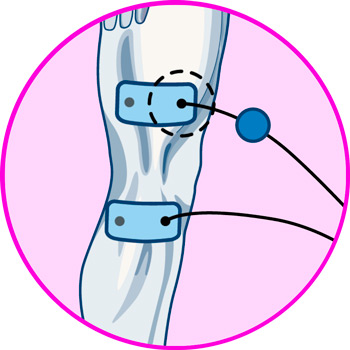
Electrodes for calf
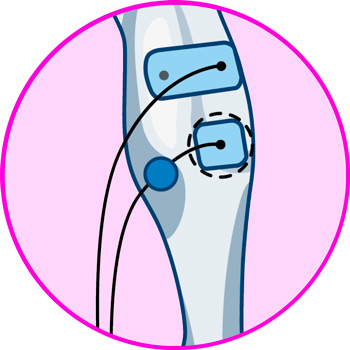
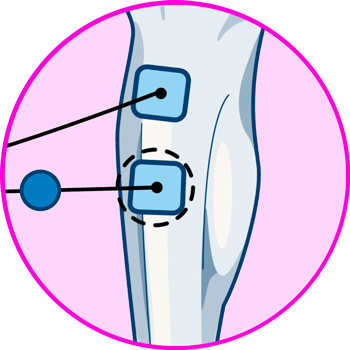

More types of EMS stimulators and TENS machines you should know about
Most common types of leg injuries
Most of the body's weight is supported by the legs, and they can do so thanks to the fact that they make up the largest muscle group in the human anatomy. However, while they have great endurance to move our entire body to perform a wide variety of activities, they are also very vulnerable to injury due to the large amount of stress they are subjected to.
Among the most common injuries that can be suffered in the legs, we can highlight the following:
- Muscle strain: occurs when one or more muscles along the leg are overstretched, causing tension or rupture of the muscle fibers. It occurs due to overexertion applied to the thigh or calf without proper preparation or warm-up, and can result in sharp pain when moving the leg, weakness and tenderness.
- Tendonitis: it occurs frequently in the hamstrings, and is a consequence of the sudden transition between maximum contraction and maximum stretching of the muscle when performing sudden and abrupt stops, causing a sharp and disabling pain just below the gluteal area.
- Fractures: This injury occurs when one of the bones that make up the leg breaks or cracks. This break can occur in the femur, tibia or fibula. It occurs due to trauma caused by falls or accidents and its symptoms include extreme pain, swelling, inability to move the knee and walking.
- Bursitis: bursitis occurs mainly in the hip area and is due to inflammation of the synovial bursa that covers the bony protrusion of the hip. Symptoms include intense pain at the hip point that extends to the thigh area, previous injuries or surgeries, as well as differences in the length of the legs can be risk factors for bursitis.
- Cramps: can occur in the calf, hamstring and femoral muscles. This is a neuromuscular abnormality that causes the muscles to contract intensely and for a prolonged period of time, during which it can cause intense pain and make it impossible to move the leg. Its most common causes are muscle overload and lack of hydration or minerals such as potassium and calcium.
Differences between TENS and EMS: Which one to use for leg pain?
Electrical stimulation therapies are widely used in the field of physiotherapy, thanks to their abilities to treat pain caused by injuries and disorders. However, it is necessary to highlight the fact that both TENS and EMS therapy have an effect on different areas, so it is necessary to know their differences in order to apply them correctly.
TENS, or Transcutaneous Electrical Nerve Stimulation, is a type of therapy that uses electrical currents applied to the nerve endings of the pain receptors located in the sciatic, femoral, tibial, peroneal and sural nerves, and their respective branches. The intensity of the discharges is variable, ranging from 1 to 250 Hz, depending on the lesion and the level of pain, giving the patient a feeling of relief.
In contrast, EMS or muscular electrostimulation is a physical conditioning and rehabilitation technique that uses electrical impulses in the same way, with the difference of their intensity and that are designed to generate muscle contractions that mimic physical work, increasing the tone, strength, definition and elasticity of muscle groups such as the gastrocnemius or hamstrings, improving the aesthetics and physical abilities of the user.
Knowing this, transcutaneous electrical nerve stimulation is the appropriate technique for the treatment of pain in the legs, whether muscular or articular, thanks to the interaction of electrical impulses with the nerve endings of the nociceptors in the various branches of the nerves of the legs, providing a sense of relief to the patient.
EMS therapy, on the other hand, is not an ideal treatment for leg pain, since its focus is on physical conditioning and muscle mass recovery, not nerve interaction. Since the legs are a region with abundant muscle tissue, it is possible to derive a great deal of benefit from the use of EMS therapy on the lower extremities.











